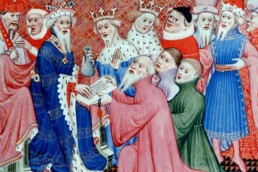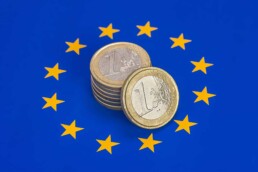Marco Polo, a Venetian merchant and traveler, is one of the most well-known personalities in the history of travel. His epic expedition throughout Asia, which lasted over two decades, introduced the Western world to the remote reaches of the East in the late 13th century. His vivid observations of the Mongol Empire, its culture, and the riches of the Orient have left a lasting impression. This article explores the roots of Marco Polo’s travels, the historical setting, and his personal experiences, with a focus on his interactions with the Mongol Empire.
Marco Polo was born in 1254 in Venice, a thriving maritime republic of the period. Marco’s family, including his father Niccolò and uncle Maffeo, were experienced merchants who had already travelled to the East, paving the way for his own voyages. Niccolò and Maffeo travelled to the Mongol Emperor’s court in China after visiting Constantinople. In 1269, they returned to Venice and told stories of their journeys. Their contact with Kublai Khan, who displayed an interest in learning more about Western culture and Christianity, prompted them to embark on a second expedition in 1271, this time with little Marco.
At the time, Europe knew nothing about civilisations elsewhere than the Mediterranean. The East, particularly China, was a remote and largely unknown continent. Although trade routes such as the Silk Road had been established, few Europeans had journeyed far into Asia. Marco Polo’s expedition would influence not just his own life, but also European conceptions of Asia.
The late thirteenth century saw substantial political and economic development in both Europe and Asia. The Mongol Empire, commanded by Kublai Khan, ruled a huge realm extending from Eastern Europe to the Sea of Japan, including much of Central Asia and China. This unparalleled empire created safer trade routes across Asia, including the Silk Road, which allowed for the flow of products, ideas, and culture.
At the same time, Europe was transitioning from a feudal framework, and merchant families like the Polos were beginning to look for new trading prospects. The draw of the East, with its fabled riches of silk, spices, and precious metals, inspired traders to push the bounds of discovery. For Marco Polo, this expedition was about economic opportunity as much as curiosity and adventure.
In 1271, Marco, Niccolò, and Maffeo travelled from Venice by sea to the eastern Mediterranean and then on land across the Middle East. They travelled down the Silk Road, passing via Armenia, Persia (modern-day Iran), and Afghanistan. Their trek was perilous, with rough terrain, terrible weather, and a continual threat from bandits. However, the Polo family was well-prepared, having navigated the difficulties of local politics and developed alliances with numerous monarchs along the way.
It took them almost three years to reach Kublai Khan’s court in Shangdu (Xanadu), a summer palace near modern-day Beijing. This was a watershed moment for young Marco Polo, who was only 21 years old at the time. Kublai Khan was delighted by these Western visitors and warmly welcomed the Polos, particularly Marco, who rapidly piqued the Khan’s interest with his intelligence, curiosity, and ability to study languages.
Marco Polo’s stay at Kublai Khan’s court is one of the most fascinating elements of his travels. He became the emperor’s close confidant, working as a diplomat and messenger for the Mongol court. The Khan dispatched Marco on numerous missions around his kingdom, allowing the Venetian to see the breadth and diversity of the Mongol territories firsthand.
Polo’s tales describe Kublai Khan’s court as enormously wealthy and sophisticated. He marvelled at the usage of paper money, which was unheard of in Europe at the time, as well as the advanced infrastructure, like as roads and postal networks, that permitted communication throughout the enormous empire. Marco also noticed the Mongols’ religious tolerance, in which diverse faiths coexisted happily under their authority.
Marco Polo was highly astonished not just by the Mongol Empire’s riches and might, but also by the cultural distinctions. He documented the attire, habits, and lives of the individuals he met, ranging from nomadic tribes in Central Asia to highly organised Chinese culture. His thorough observations provided a unique view into the daily lives of those living under Mongol control.
After 17 years of service to Kublai Khan, Marco Polo and his family voiced a wish to return to Venice. Kublai Khan, who was already ageing, grudgingly gave them permission to leave, giving them with one final mission: to accompany a Mongol princess to Persia. Following completion of this duty, the Polos returned to Europe, arriving in Venice in 1295 after a 24-year journey.
When Marco Polo returned, he found himself in a drastically changed Venice, which was embroiled in battle with the neighbouring city-state of Genoa. Marco was arrested and imprisoned shortly after returning from war. During his time in prison, he encountered Rustichello da Pisa, to whom he dictated stories about his adventures. These anecdotes were collected in the famous book *The Travels of Marco Polo*, also known as *Il Milione*.
Despite some contemporaries’ scepticism, Polo’s writings became highly popular, serving as one of the earliest thorough portrayals of Asia available to the Western world. His evocative descriptions of the East’s richness, civilisations, and technologies impacted subsequent generations of explorers, notably Christopher Columbus, who took a copy of Polo’s book on his own expeditions.
Marco Polo’s journey to Asia is a fascinating story of exploration, diplomacy, and cultural interaction. His encounters with the Mongol Empire, in particular, show a moment in history when East and West were linked in ways that shaped the path of world history. Polo’s observations provided essential knowledge about the world beyond Europe, igniting curiosity and encouraging future adventures. Today, his legacy lives on not only via his writings, but also through an enduring fascination with the cultures he visited and the paths he took.



